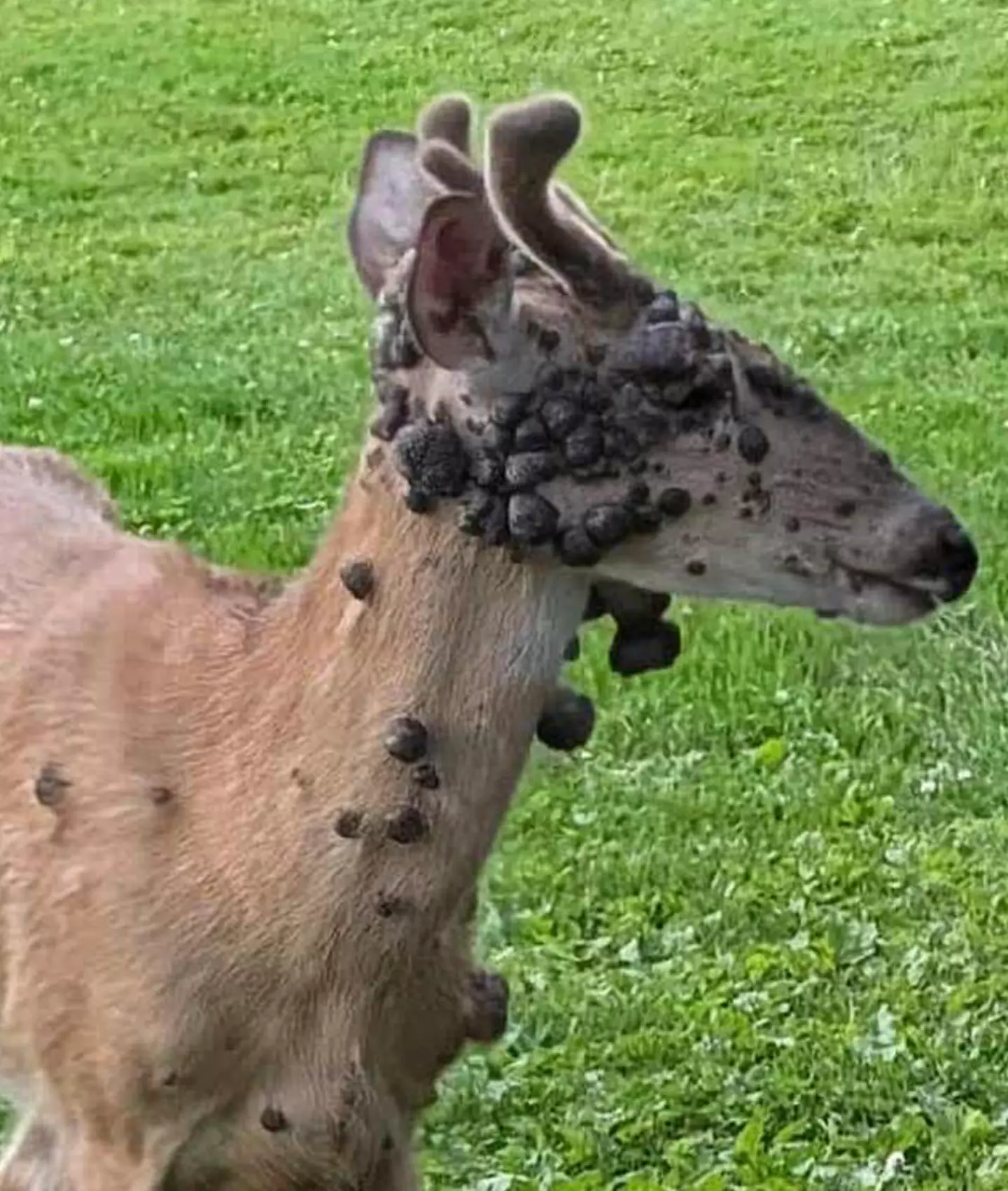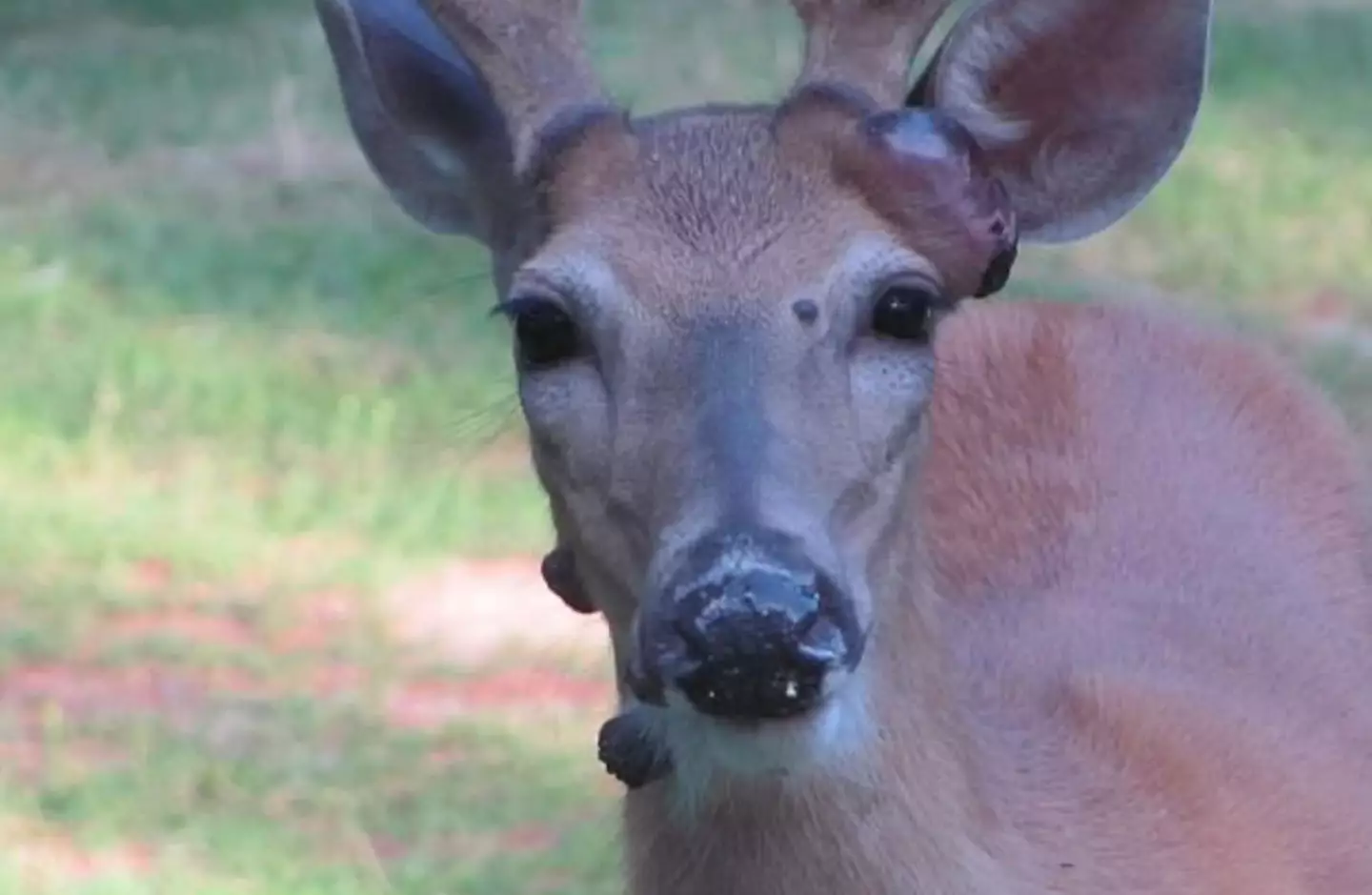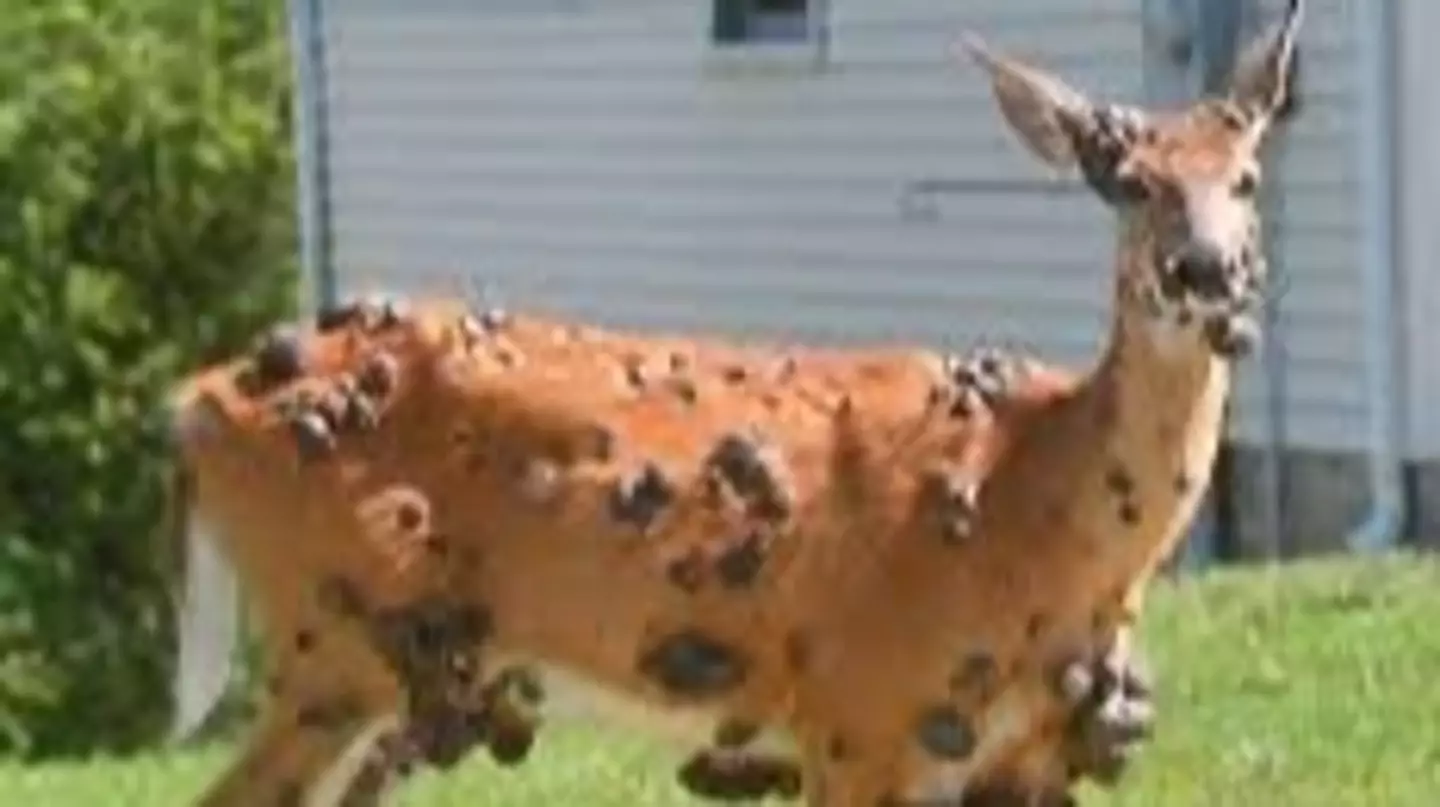The unusual sight of deer exhibiting ‘black-bubbled’ appearances is becoming increasingly common across the United States, continuing the trend of ‘mutant species’ sightings.
After the unsettling reports of Colorado’s ‘Frankenstein rabbits’ and ‘zombie’ squirrels, it appears Pennsylvania and Wisconsin have their own examples of animals with abnormal growths.
Social media is abuzz with images of these wart-covered deer, prompting a mix of curiosity and concern.
One user shared their encounter on Reddit, describing a deer in their backyard with unusual growths, and asked for advice, “Not sure what’s wrong with her or how we can help. Gunshot wound? Tumor? Fireworks? Prion disease? Don’t know what to do.”
Another user posted a photo showing lumps on a deer’s chest and face, questioning, ‘what’s wrong with this deer?’
What is causing this condition?

The Maine Department of Inland Fisheries and Wildlife explains that these growths are due to a condition known as deer fibroma. This condition stems from a ‘species-specific papillomavirus,’ akin to the cottontail rabbit papilloma virus (CRPV) found in rabbits.
The department’s website states: “These manifest as firm, warty growths fixed to the skin of a deer. They vary in size (though most are just a few centimeters in diameter), are typically dark in color and bare of fur, and often appear fissured or lumpy.”
It further notes that most affected deer have only a few small fibromas, although larger and more widespread growths are not unheard of.
Similar to CRPV, the virus responsible for deer fibroma does not pose a risk to humans or other animal species beyond deer.
Dr. Kristin Mansfield, a wildlife veterinarian in Washington state, explained to FOX13 that deer transmit the virus to each other by sharing feeding grounds, sleeping areas, or rubbing posts, which are often used by bucks during mating season to mark their territory.
Despite the fibromas, deer can still pose a risk for spreading diseases such as Lyme disease through the ticks they carry.
Fortunately, the deer’s immune system typically conquers the virus, causing the warts to decrease in size and eventually vanish over a few months.

Currently, there is no proven treatment for this condition, though surgical removal of the lumps is an option for captive deer.
The best approach is generally to leave the affected deer alone. However, in extreme cases where the growths significantly impair the deer’s ability to eat, move, or see, euthanasia may be considered.
One factor contributing to the spread of these conditions could be climate change, which provides a more favorable environment for mosquitoes and ticks.
Dr. Omer Awan from the University of Maryland School of Medicine highlighted the impact of climate change in an interview with The Daily Mail: “These temperature changes are resulting in diseases that were never endemic in certain areas to become endemic.”
He added, “If you take a look at Lyme disease, for example, we’re starting to see it in areas that we never saw it before… places like southern Canada, northern states on the East Coast, like Maine.”
“People are starting to talk about it more, they’re starting to document it more on social media, and hence, there’s been a lot more discussion about this.”

